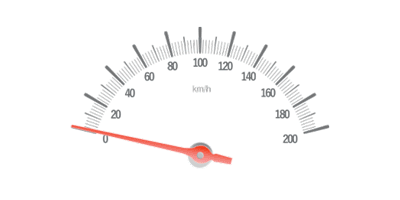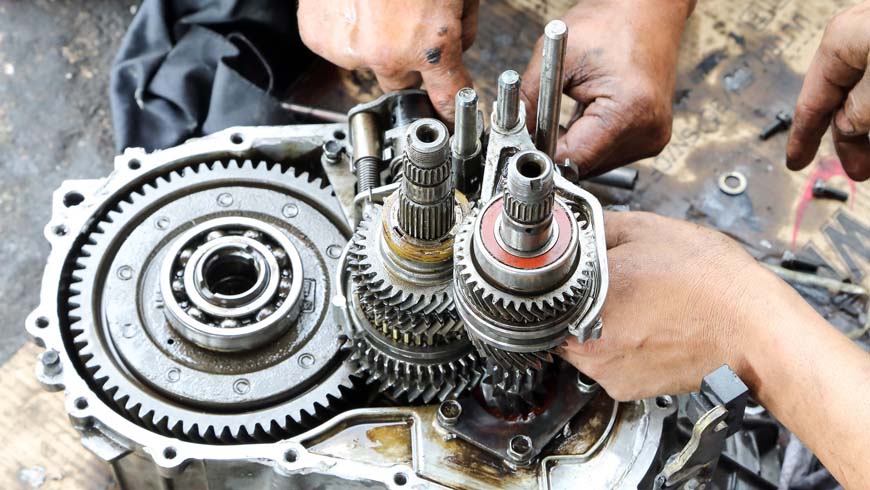The purpose of the transmission is to transfer the power generated by the engine to the drive axle and wheels by using different gears. A car’s engine rotates within a fixed range of speeds, generally from 600 to 7,000 revolutions per minute (rpm) for most passenger vehicles. The vehicle’s wheels typically spin from 0 to 1,800 rpms, so the transmission uses different gears with specific ratios to match the most efficient use of engine power for the vehicle’s speed.
For instance, when starting from a full stop, your car’s engine is spinning much faster than the wheels so a lower-ratio gear that supplies higher amounts of torque is needed. When traveling at highway speeds, the wheels may be turning much faster than the engine, meaning a higher-ratio, low-torque gear is needed.
There are a few varieties of transmission types found in most modern vehicles:
The most common type of vehicle transmission for cars built and sold in the United States, automatic transmissions automatically select the correct gear for the driving conditions. Beyond special circumstances like towing a trailer or extremely steep inclines or declines, most drivers simply have to put the vehicle’s gear selector into “D” for drive and the automatic transmission does the rest. Up until recent times, automatic transmission vehicles were typically less fuel efficient than their manual transmission counterparts.
Also known as a standard transmission or manual gearbox or simply “stick,” manual transmission vehicles are a relative minority in modern American vehicles. Manual transmissions rely on the driver to select and switch gears constantly. Manual transmissions are typically equipped with a clutch pedal that’s required for the driver to be able to switch between gears. Although manual transmission vehicles provide greatly improved fuel economy (and typically cost less than automatic transmission vehicles), the downside is the constant need for attention on the part of the driver.
Typically found on lighter passenger vehicles, CVT transmissions are relatively new features in terms of the American automobile market, but they offer a special set of advantages. Although they employ a different technology than traditional automatic transmissions, they perform in the same manner in terms of driver experience. Moreover, they deliver increased fuel efficiency when compared to traditional automatic transmissions.
SIGNS OF TRANSMISSION PROBLEMS
- Transmission no longer operates normally
- Strange sensations
- Warning lights
- Strange or new noises, especially grinding, clunking or thumping
- Burning smells or strange smells
- Fluid leaks, puddles beneath the car


